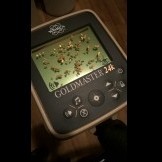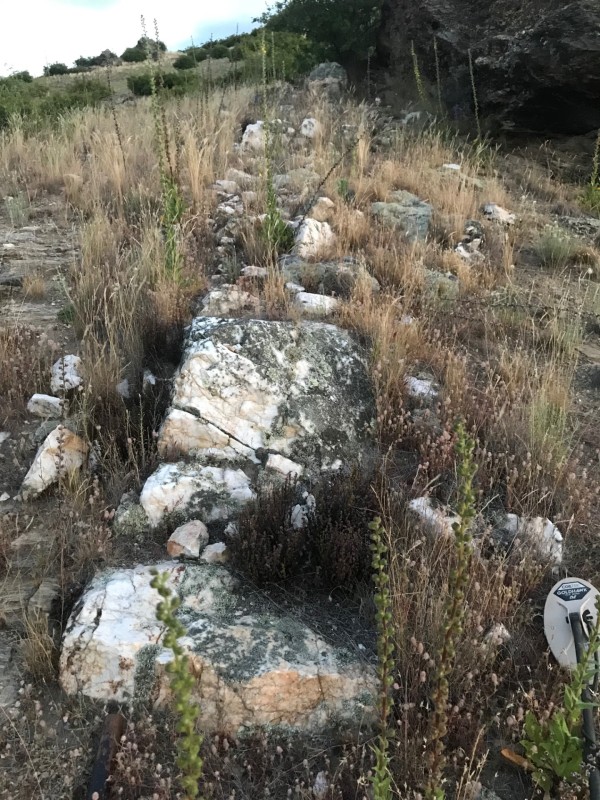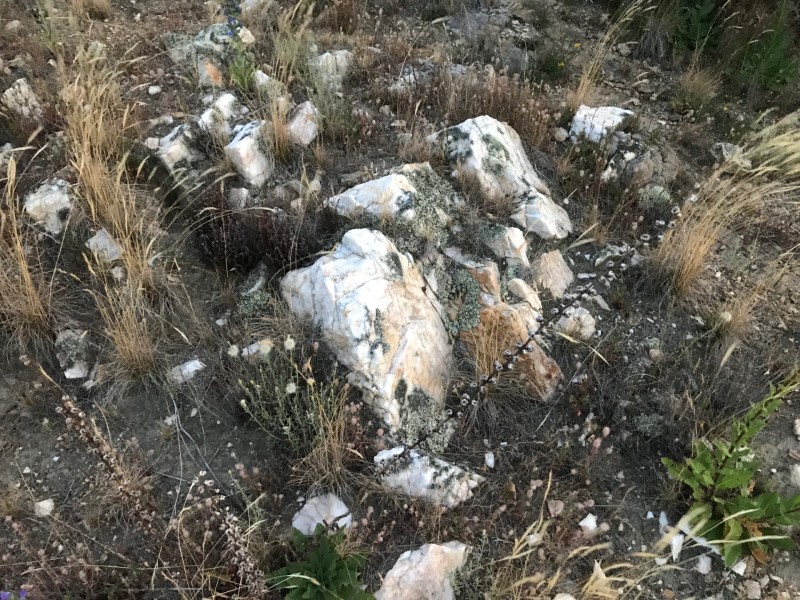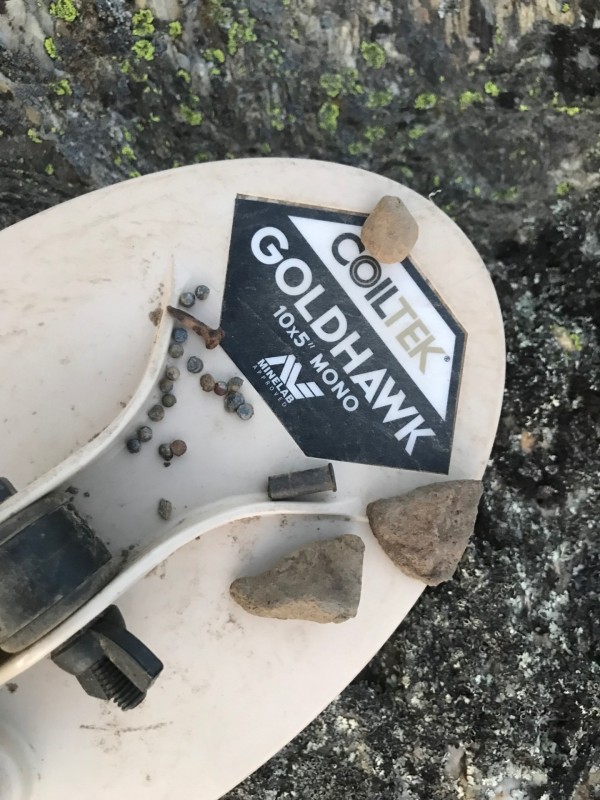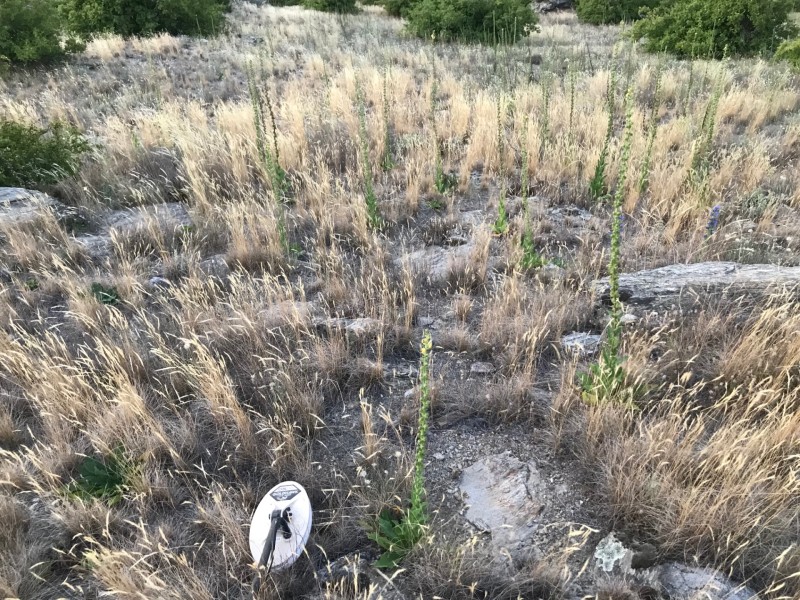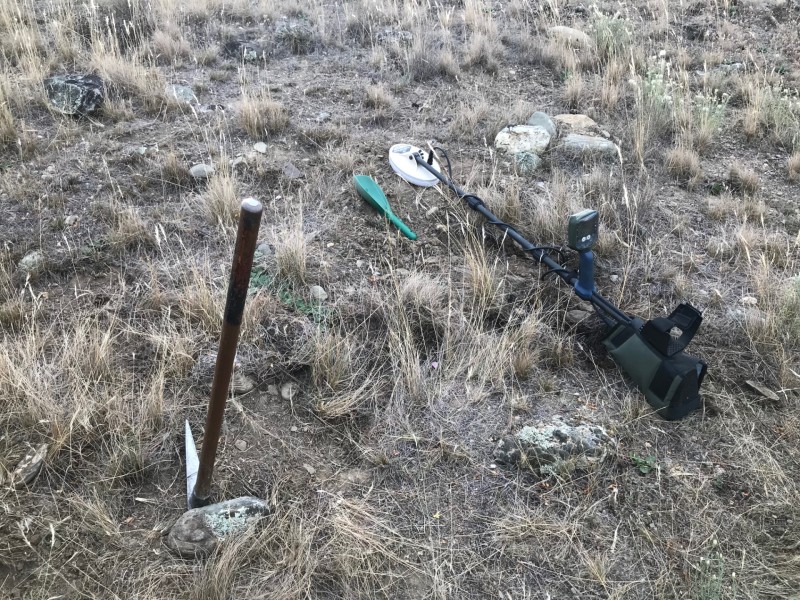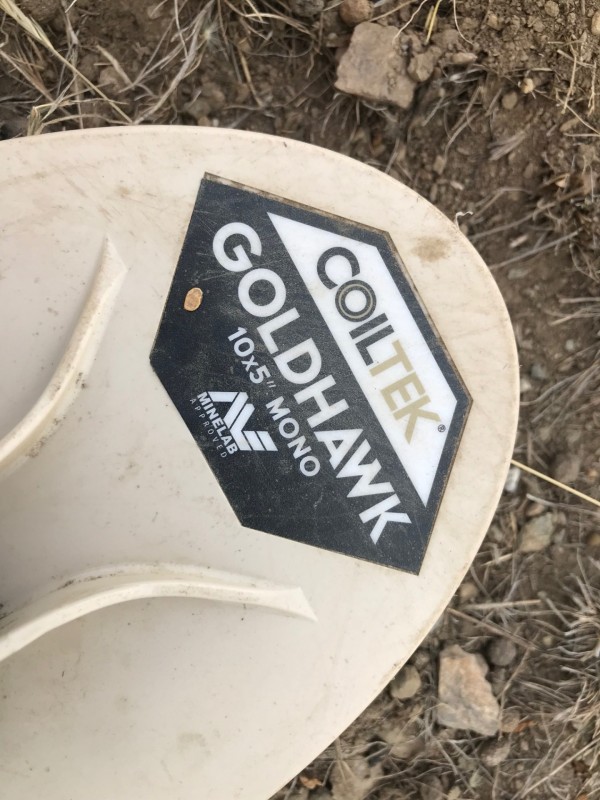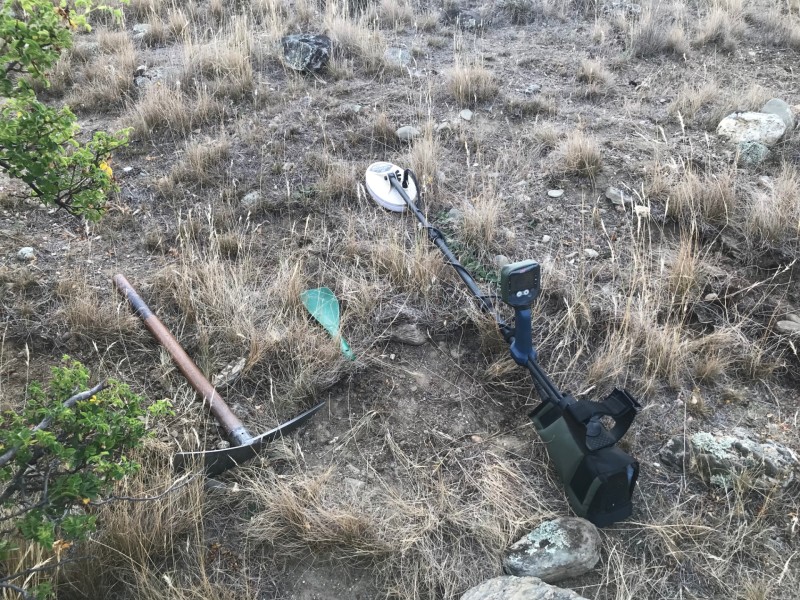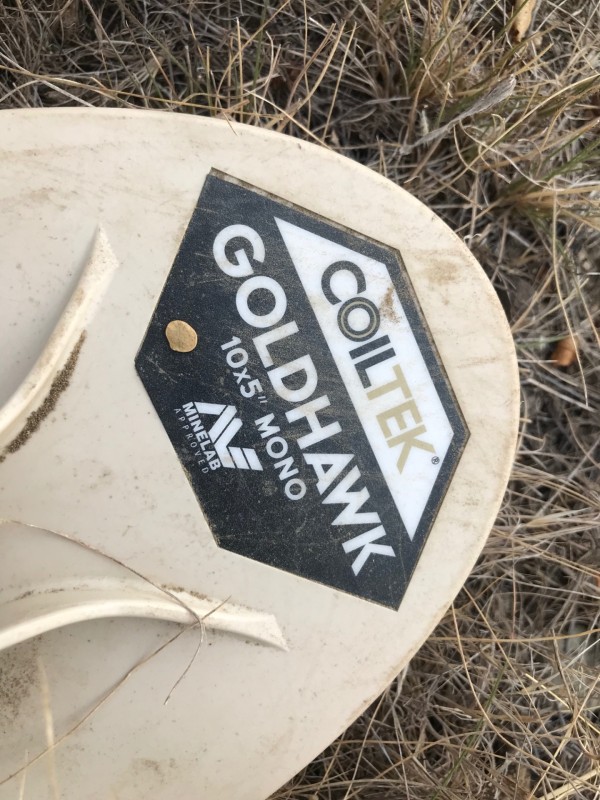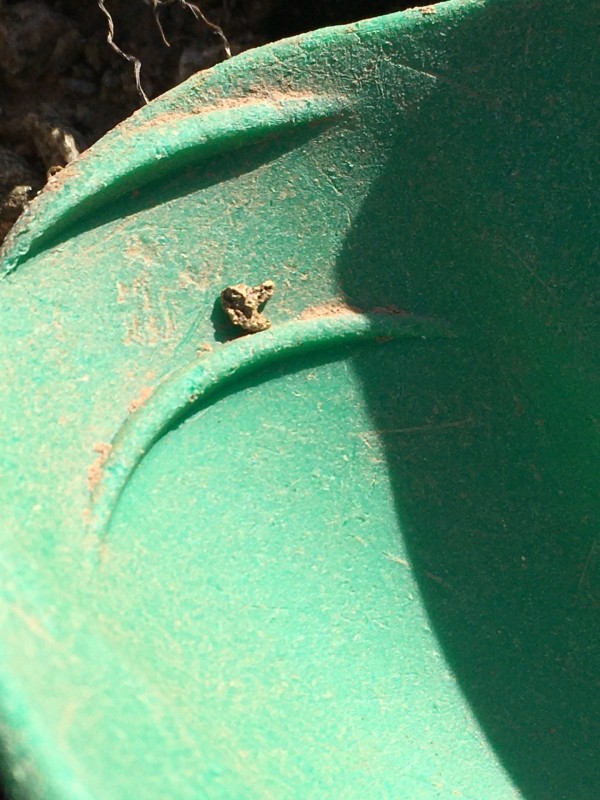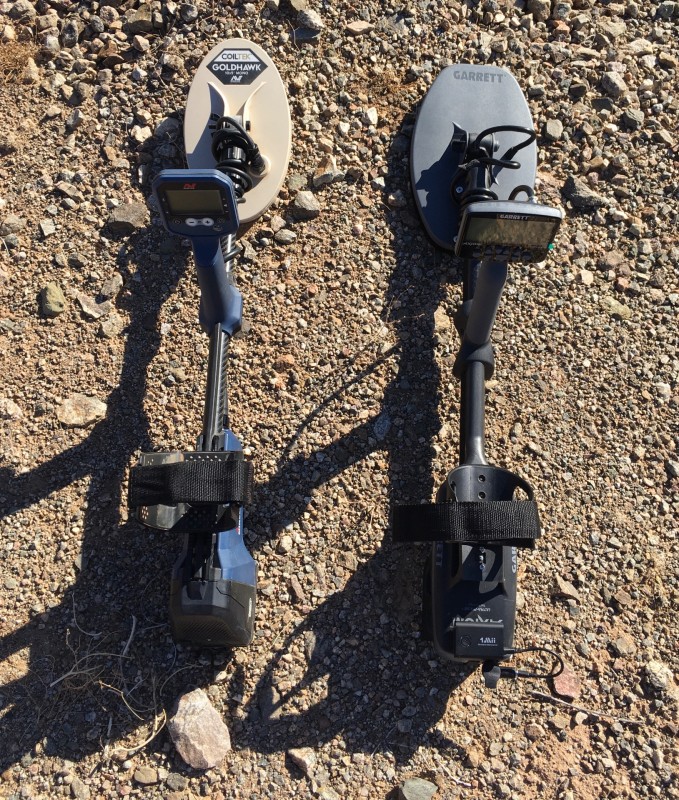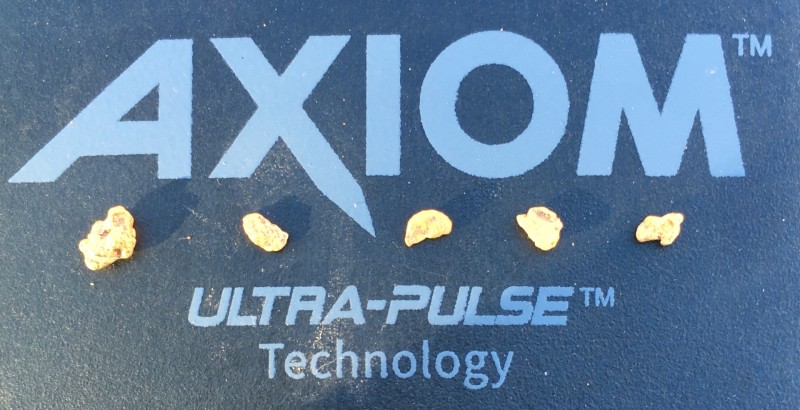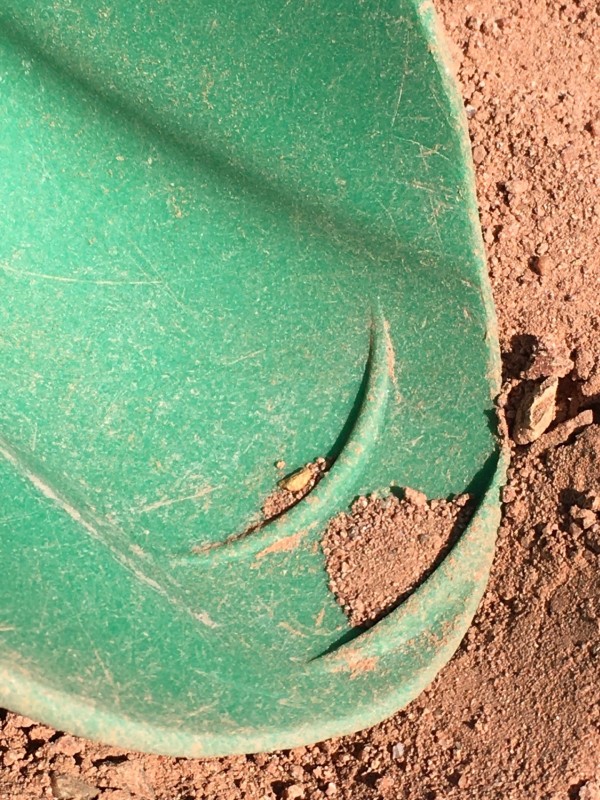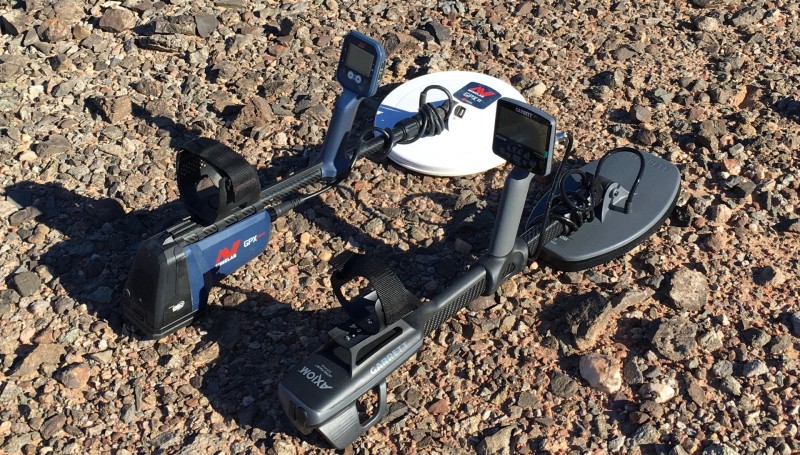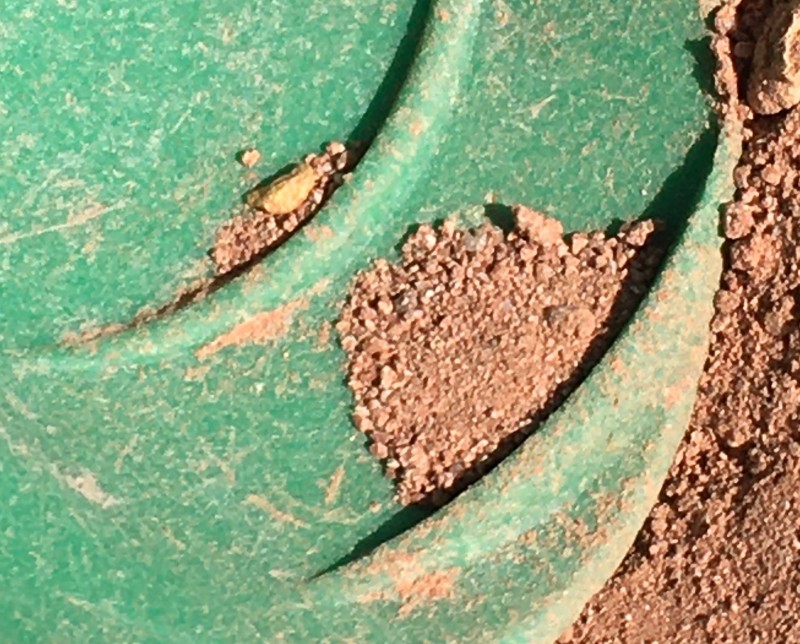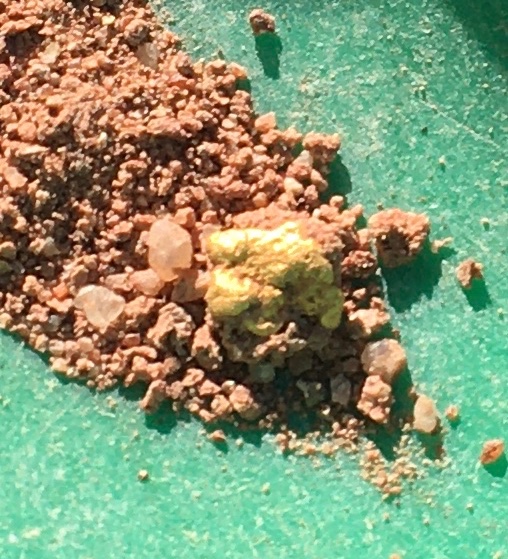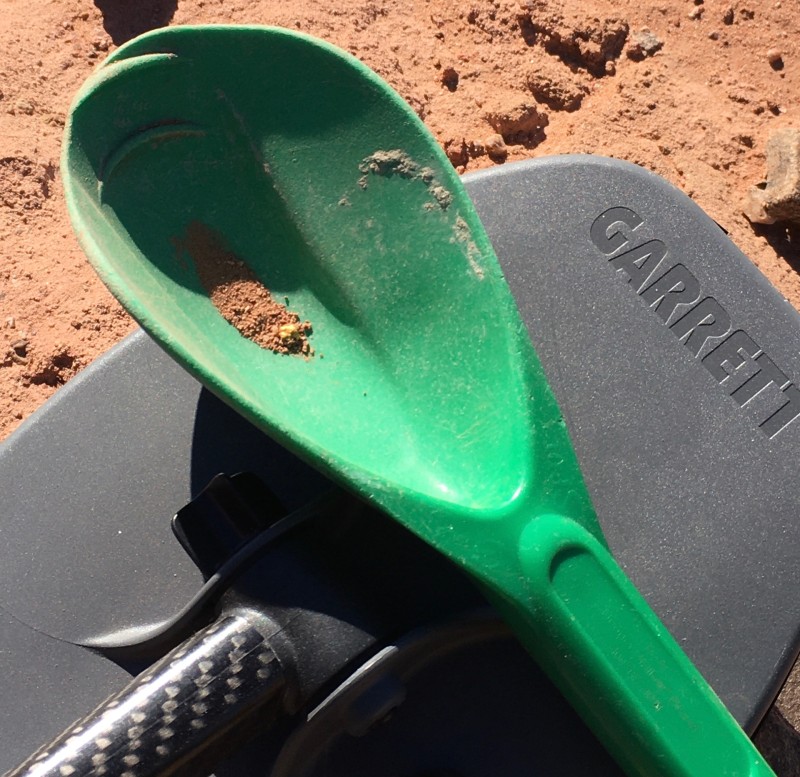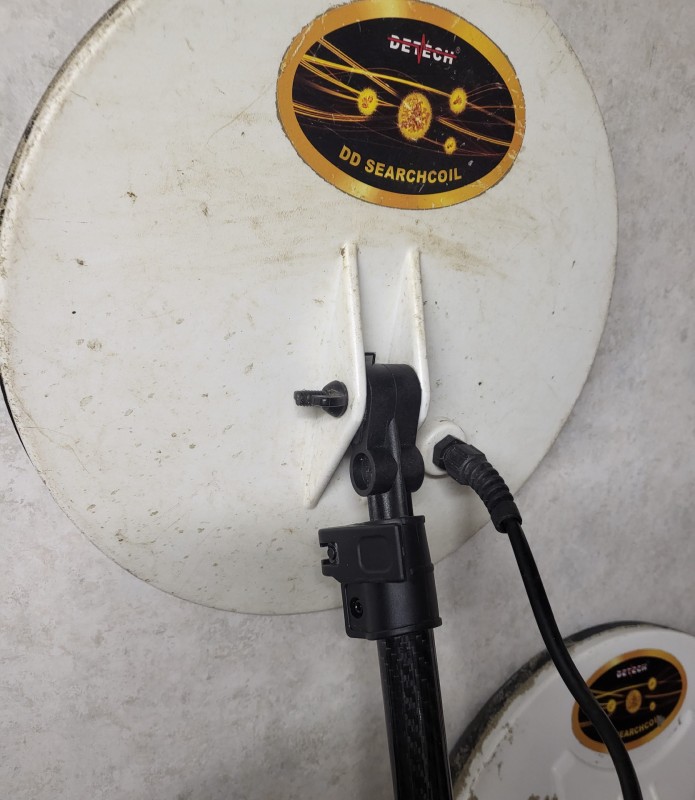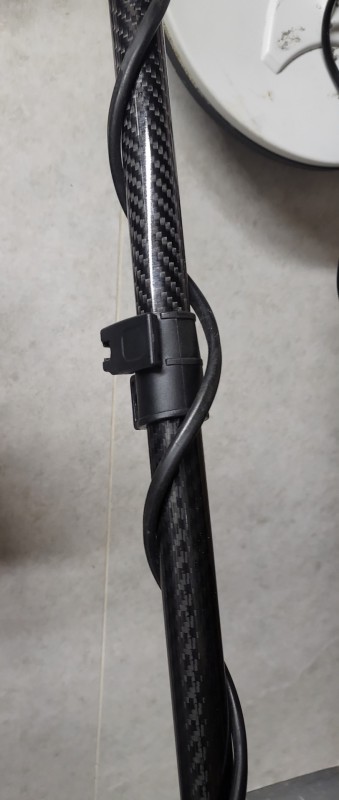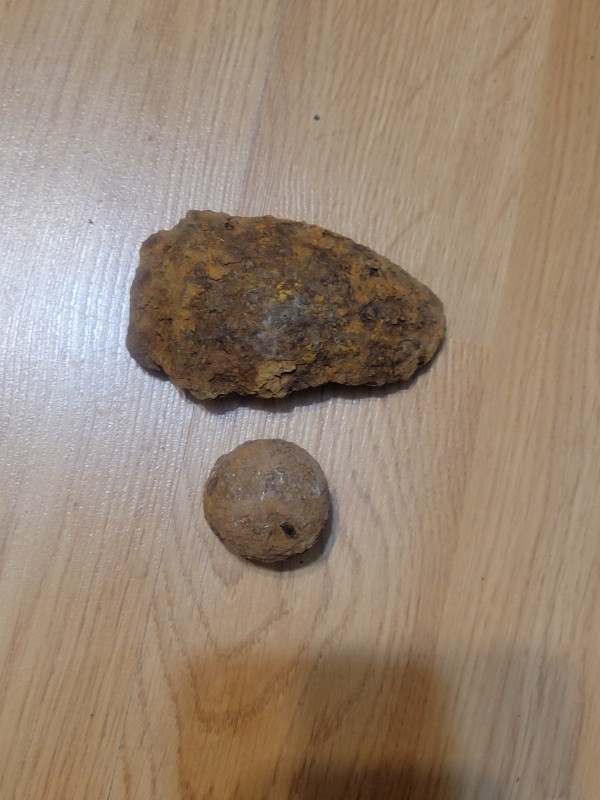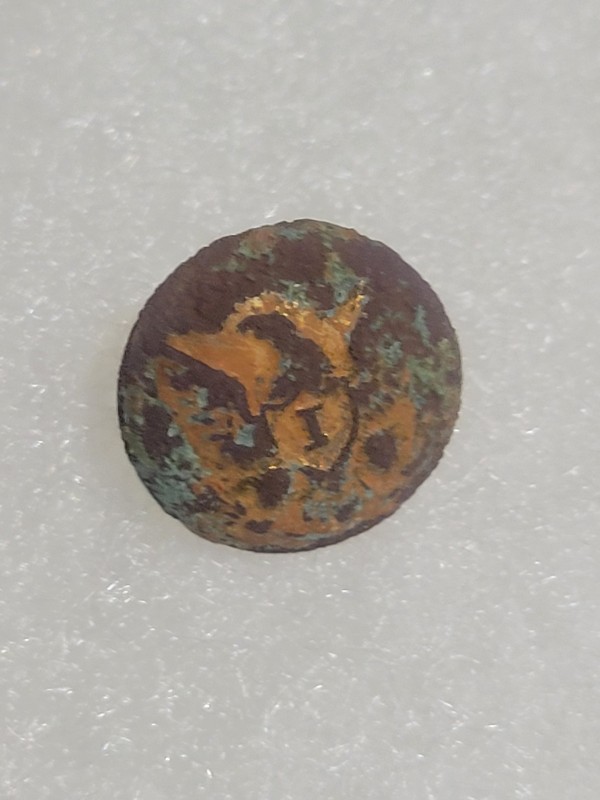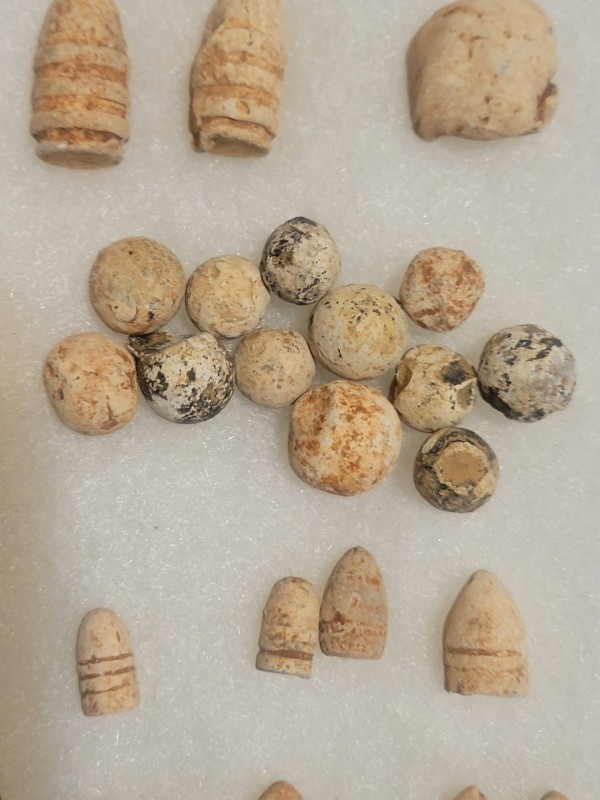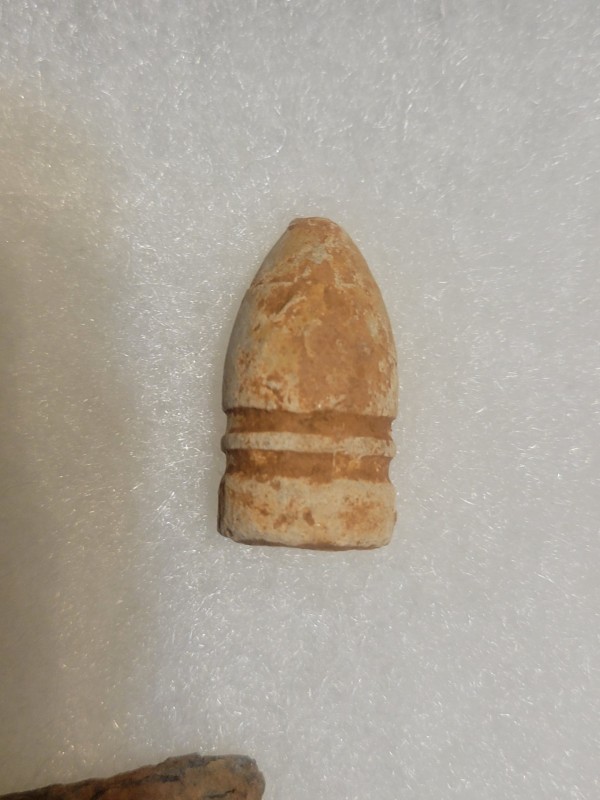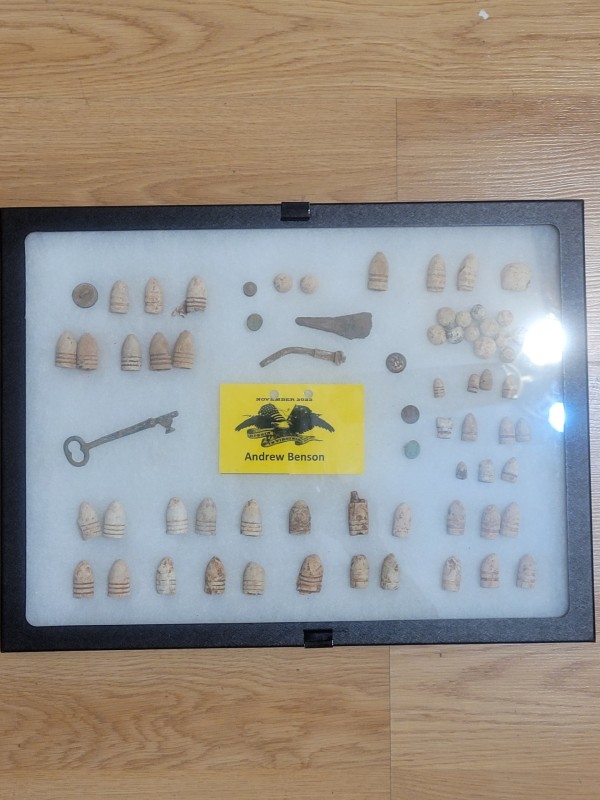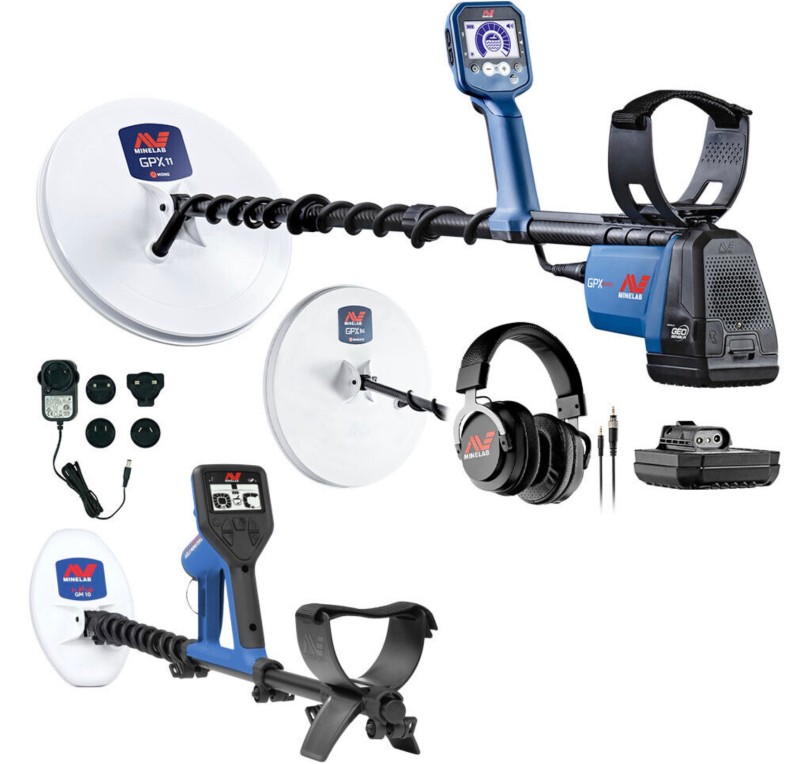Search the Community
Showing results for tags 'minelab gpx'.
-
and another spot that I have been getting small gold from that was very close to or had been gone over somewhat last year with the Zed and the 17"cc x-coil. So the last two days on this next patch had yielded 32 bits of gold so far and have another go at it today to see if there might be a few more.
-
What does Geosense do? Surely it's not just a name for auto sensitivity and auto tracking of the ground and we don't even know if it does actually adjust the sensitivity at all. I've often wondered what it actually does and nobody seems to really know from what I've been able to see, maybe I've just missed an explanation from someone who knows. This is what Minelab's description of it is GeoSense-PI™ technology analyses and responds to ground signals with great clarity and precision, so you can detect in difficult environments once thought undetectable. It rapidly suppresses unwanted signals via three overlapping feedback systems for superfast detection of even the tiniest gold pieces. So it's a form of auto ground balance that sounds like it's in 3 different feedback systems, what are these so called feedback systems? could it be like on the older GPX where there was sensitive extra, fine gold, enhance and the 6000 runs in all three of these timings Minelab selected as optimal all at once for the ground conditions its in? So maybe according to ground conditions it selects the timings most suitable out of the range it has available for the ground automatically and keeps analysing the ground and if in a difficult situation it changes selected timings? I guess it's Minelab's secret sauce for the GPX 6000 and the engineers probably have a giggle at me when I say I'd like a way to disable it sometimes as then it wouldn't be a GPX 6000 at all 😉 It would be nice to know a little more about such a defining feature of the detector. It could explain why there is no fixed ground balance as using the three different timings at once it needs to constantly check in case ground conditions change enough that one of the timings is no longer suitable. It would also explain why Jason's pointed out if you hit enough bad stuff, like a few big steel bolts shallow or something the detector appears to lose sensitivity and take a while to get it back, as it's switched out to a more difficult timing that's not so sensitive. If it was just the big bolt throwing out ground balance the auto tracking by Minelabs own admission maybe too slow to update and a quick trak is recommended, see here from the manual. GPX 6000™ tracks automatically to changing ground conditions during normal use. It is effective for typical detecting in most grounds. There will be times when the automatic ground tracking will not be able to track fast enough, such as when moving to a different type of ground. In these situations, a Quick‑Trak Ground Balance will quickly recalibrate the detector to the new ground. And for those that say the GPX doesn't track out small gold like the Gold Monster does, again Minelab say it does and when recovering small targets its wise to use quick trak to prevent it happening. I'm sure many of us have experienced targets disappearing when trying to find them with the GPX, especially those of us that hunt small gold. Just like the fully automatic GM 1000 it tracks them out, again from the manual. Quick‑Trak ` Ideal for both new and experienced users. ` Tracks successfully to most ground conditions. ` Detector continuously tracks ground during detecting, but Quick‑Trak may still be used to rebalance to changing or variable ground conditions. ` Ground balances more slowly than Quick‑Trak. ` Quick‑Trak is a manually initiated Ground Balance process for faster ground balancing than Auto. ` Use to ground balance to a chosen area of ground, e.g. patches of extreme mineralisation, hot rocks etc. ` Use in between digging and checking for a target, so that the target is not ‘balanced out’ accidentally. All this Geosense stuff is just a wild theory of course but my understanding of what Geosense could possibly be. Models are usually successors of older models so features we saw on older models are often incorporated into new models like the GPX timings, perhaps in a modern world they were able to automate them and auto adjust which timings you're using while allowing multiple timings at once with the software doing the work to pick signals out of each timings results. We went from having 9 timings on the GPX 5000 to no longer having any on the GPX, although you could say that normal and difficult are its only timings. The conductive setting and the EMI setting on the DD coil don't appear to be associated with timings, more functions of the DD coil. It also detects both small and larger gold at once and handles various ground conditions at once eliminating the need for manually selecting timings like we do on the older models.
-

Garrett Axiom Vs Minelab 6000
mn90403 replied to Dain Blackburn's topic in Detector Prospector Forum
What is the latest? Which one does what better? -
This is a good Q&A on the GPX 6000 for those considering one, Nenad was a field tester for it and knows what he's talking about. I found what he has said in his Q&A here very agreeable. https://phasetechnical.com.au/minelab-gpx6000-gold-detector-qa/ I like that he makes the case for the various detectors and honestly talks about their strong and weak points. Now the GPX has it's known issues resolved it really is a good detector and I really like mine, as is the GPX 4500/5000 he also talks about and of course the GPZ 7000 is great, and in my mind the best there is.
-
Hello friends, new to this forum. I've looked at topics here a few times. Great place! I been detecting for awhile for gold. Eventually I bought a gpx 5000 and a few xtra coils. The biggest I have is a 14". But I have some gold sites that have some deep gold. I already dug everything that had a signal after chaining the whole deposit. I've been checking out online at some larger coil choices. There is a couple that came out last few years that I'm kinda interested in. They have a nugget finder 25" ddx coil. And a detech 24" concentric coil. I've only seen a little info on both online. I was wondering if any members have any experience with these coils or know anyone that uses one. I don't know if they are capable of detecting at least a small piece of gold down to a gram. Not sure either how good they run in strong mineralization. If anyone has a opinion about these coils or which one between the two they would pick. I would be very grateful. Thank you.
-
Trying To Decide Between GPX 5000 Or GPX 6000...
Gaustad18 posted a topic in Minelab Metal Detectors
I've been researching the Minelab detectors and I would like to make a sizeable upgrade from my VLF detector (GB2). I would like to own a new PI detector that can handle hot ground better than the VLF machines can. I should first point out that I will mainly be using the detector for hunting meteorites, but I foresee myself hunting for gold in the coming years as well. Currently there is the great deal going on with the 6000 for $4500. I have also been looking at the GPX 5000 as it can be found used for around $2000-$2500 on ebay. I've read a lot of posts saying that the GPX 5000 is a good all around detector and can handle hot, mineralized ground quite well. On the other hand, there have also been great reviews on the 6000 for finding small gold, and the ease of use and lighter weight is very attractive as well. Just wanted to ask what you guys think the better option is for handling hot, mineralized ground, as that would be the primary ground I would be hunting starting out. I'm leaning towards the 6000, but I've heard that it can have issues with hot ground, and if that's the case, then I might just want to get a used 5000 at first, and then I can always upgrade to the 6000 in the future... My main considerations are cost and handling hot ground. I can deal with the heavier weight that the 5000 brings but if the 6000 truly is leagues ahead of the 5000, then I will probably go with the 6000. -
exactly the reason I parted ways with the 6000 and kept the SDC......
-
I got to spend a day and a half on some claims in the Little San Domingo Wash area north of Phoenix Arizona this week. I also got to meet up with Bill Southern (Nugget Shooter) for a few hours too. Thanks Bill! I mostly wanted to see how the GPX 6000 with Coiltek Goldhawk 10X5" coil and the audio mod would behave. Finding some gold was secondary. The GPX 6000 was super quiet running at sensitivity 7 or 8 with a stable threshold tone and only sounded off on some of the metamorphic magnetite filled schist and gneiss which also tended toward ironstone. Those hot rocks were easy to recognize and kick out of the way. The threshold only got a bit wobbly when aircraft were in the area. I did manage to find a 0.11 gram rough looking LSD nugget. The photo is of the targets that made it into my nugget containers which are 35mm film canisters. The GPX 6000 with the Coiltek 10X5" was super easy to swing for two 6 hour sessions, easy to pack and hit some incredibly small targets. Those are .22 long rifle shell casings which give a good size comparison. I really enjoyed using the GPX 6000.
-
-
hi , i need to know the data of this mosfet and help me to bot it on ma gpx 5000 dosn`t work thanks .
-
Yes it seems to be true, Minelab (at least for USA) is offering the most popular GPX-6000 at 25% off. We've been told this Limited Sale is good through the month of March or until supplies run out? Well what happens if Minelab sells a bunch of them? Will they see the writing on the walls and realize, just maybe the price points could be better off for us here in the US? Prime example is the very popular Minelab Equinox 800 prices under $1000. That strategic price point move was brilliant and all other manufactures dream of having such sales. Hopefully this move proves to be GOLDEN for Minelab and you/I the consumers. Or maybe there is a GPX-8000 around the corner?
-
Wow! 25% off the GPX-6000 for the month of March and its just reaching its second year anniversary. It’s always good for the consumer when two competing companies are trying to keep sales up and use pricing to achieve that goal. If these recent sales prices our part of this goal and could remain in a long term competition, then its going to be a very competitive market for these high end detector. Note also, the 15% military discount Is now also offered by both companies. The prices added in the list below do a fairly reasonable job at separating out the performance verses current pricing options on the higher end PI detectors. The only caveat to this is If pricing and performances are close together I would always choose the three year warranty option though. Below is the price list including the most recent February/March sales prices offered on the most high end Pulse Induction detectors. ATX $2,379.00 Weight with 11 x 13 inch mono coil 7.0 Lbs. Water submersible. Lots to offer for coil sizes & coil configurations to achieve small and fairly large gold performance. Offers partial iron discrimination with DD coils. 2 year warranty SDC 2300 $2,550.00 February SALE vs. $3,499. Weight with 8 inch mono coil 5.3 Lbs. Water submersible. The MFP timings with the small 8” coil seems to handle higher mineralization pretty well. Very small gold performance. 3 year warranty Axiom $3,995.00 Weight w 11 inch mono 4.2 LBS. Very small and fairly large gold performance. Offers partial iron discrimination with DD coils. 2 year warranty GPX 5000 $3,999.00 Weight on arm minus battery pack 5.3 Lbs. with 11” coil. To be wireless you need to add Doc’s Gold Screamer battery and booster pack 6.3 Lbs. Largest offerings for coil sizes & coil configurations to achieve small and large* gold performance. Offers partial iron discrimination with DD coils. 3 year warranty The GPX-5000 could definitely use a price reduction also but is still one of the most versatile PI detector on the market. *Note: Coiltek Elite & Nugget Finder Evolution coils add more performance and sensitivity over previous released bundle wound coils. GPX 6000 $4,500.00 March SALE. Weight 4.6 Lbs. w 11 inch mono. Very small and fairly large gold performance. 3 year warranty GPZ 7000 $6,375.00 February SALE vs. $8,499,00. Weight 7.3 Lbs. w 14 inch DOD coil ZVT or 6.0 Lbs. with the Nugget Finder Z-search 12 inch coil and compatible CTX-3030 Li-ion battery. Minelab’s flagship detector with very small and exceptional large gold performance. 3 year warranty Please do not get to excited about the iron discrimination capabilities on the ATX, Axiom, & older GPX series, as it is only has partial discrimination at best. Works good on surface iron, but for any deep iron you will still need to dig quite a bit of dirt until your detector can determine it is iron. The only chart that I could find to show this was a GP-3000 Minelab chart showing its limited discrimination abilities, attached below.
-
From everything I've read on the Axiom from Steve H. and others I can see no reason not to trade in or sell my 5000 to offset costs in purchasing an Axiom. It's a difficult decision for me as I have found a lot of gold with the 5000 over the years. Can anyone give me a reason not to do this? I have several coils from the 8x6 to the largest for the 5000. From what I can see the only con is maybe a lack of coils at this time for the Axiom. However looks like that will change with time. For use in Northern California and the Mojave for gold prospecting. Thanks for your thoughts in advance.
-
Hi, i bought a minelab gpx 4500, it will come with 11" coil. i will use the detector at places heavly searched with for example xp deus 2, ctx3030, and other detectors. the sites are medieval, roman, bronze age, etc. so... i need a deep coil to go deeper than the others detectors. question 1-wich coils do you recomend? question 2- i read that the mono coil are the deepest, but in places with a lot of iron, it would be a pain... i was looking at the detech website, they have mono coils, dd coils, and concentric coils, this concentric coils will go deeper than the dd coils? wich type of coil will be better for this type of conditions? question 3-detech coils vs commander coils, with the same size, they will work almost the same? question 4-i will receive the detector without battery, so i need to buy a new battery. i saw a guy selling a homemade battery, are this type of batterys something i can trust? they will work like a original, and the detector will get the same deep? or its better for me to buy a original battery? thanks
-
I’m taking the plunge on one of these new detectors as the old body needs something lightweight. When the SDC came out and again the GPZ, I went over old patches and pulled out ounces of nuggets that were invisible or had to be within an inch of the coil on the previous GPX 5000 and before. That spongy and wiry stuff. The Axiom is much more in line with what I want as I sometimes detect old tailings and like the option for iron disc. Plus the price is better. But, I want to be sure the Axiom hears the “invisible” stuff as well as the 6000. Can anyone of you knowledgeable and generous folks share your experience with this before I take put down the cash?
-
I noticed a used GPX-4500 available locally. Includes 4 coils, 3 extra stems, 3 battery packs, harness and headphones. It looks like it is used little. I know the 4500 was discontinued in 2020. I have never used a Minelab but I've seen them find Au twice during group outings. Currently I'm running an XP Deus which I've run for hundreds of hours without finding Au. I've found everything else, right down to many tiny fragments of bullets. I'm keen on nugget-shooting in remote areas. Would the 4500 be a good choice at this point in time for a nugget shooting upgrade? Approximate cost is $2400 for the package, which is a lot of kroner for a hobbyist who has not yet found any Au. Any suggestions and comments are welcome. Ed, Tucson, Az.
-
Got my machine back on the dirt today after having the audio mod done. Using the speaker only, it certainly shows a major difference. With the factory BT headphones, there was zero difference, at least to my ears. Coz I got a 'good one' from the start, I think the mod on my 6000 didn't add any benefit to me. I use the factory BT headphones every time. The real benefit from the mod is for videoing your finds and having the speaker do the work lol. The Y axis coil-tilt was still the same, noisy as hell. Hopefully the NF 12x7 mono that I'm supposed to receive tomorrow will add some ACTUAL benefit.
-
Just thought that I would share my experience with what Minelab has called "GPX 6000 Speaker Audio feedback". As Steve pointed out in an earlier post, Minelab has recently documented this problem on their website: https://www.minelab.com/usa/metal-detectors/gpx-6000 then select "Updates" on the bottom of the first page. As most of you know the symptoms of this problem is very erratic threshold audio when using the internal speaker. Like any other speaker, the internal one creates an electro magnetic field, when in use, and it appears that the high gain/sensitivity of the the GPX6000 detects and responds to this very localized EMI and feeds it back. What you end up with is this out of control feedback loop that tends to oscillate and create a very erratic threshold. When the wireless headphones are used instead then a typical more stable threshold is achieved. Like many of you, I pretty much always use blue tooth headphones and have never used the internal speaker when prospecting but I decided that I wanted to have this repaired just so it was completed within the warrantee period. I also didn't use the internal speaker because it was not practical and after it is repaired/updated at least that becomes an option. On the Minelab website there are instructions for sending in your detector to the USA repair center for this "hardware update" if you choose to do. I sent an email to the repair center including the serial number on the bottom of the control box and they replied that my detector was still under warrantee and qualified for this repair/update. I chose to use USPS for shipping and I elected to insure it for $2000 at a total cost of $53 from Southern NV to repair center in PA. To insure or not to insure is a personal choice but one benefit is the the unit has to be signed for by a person at the repair center receiving department. I only sent the detector control box since my 11 inch stock mono coil works normally and the ears are fine with no visible cracks. Inside the shipping box I placed the following printed information: "To Repair Center regarding Repair Ticket #xxxxx: The problem I have with this GPX 6000 detector is the unstable threshold due to audio feedback when the internal speaker is used instead of the wired or wireless head phones. This is a known problem and is detailed on the Minelab website under GPX-6000/Updates and titled "GPX 6000 Speaker Audio. Please perform the "hardware update" that is mentioned in that article, "Minelab have produced a hardware update that removes this effect." I did this because I wanted it to be clear that this is the only thing that I wanted them to repair and not spend any time trying to trouble shoot or replicate other problems that don't exist with my detector. After I sent the unit I received update emails from the repair center regarding progress through their system. The total turn around time from the day I mailed the unit to the day I received it back was 10 days. The repair center pays for the return shipping and it did need to be signed for by me upon receiving it. I recently tested the detector, about 5 miles from my house, in a place with no known nearby EMI sources and also having mineralized ground. My smallest test target is a piece of #8 lead bird shot that weighs around 0.06 grams. In the past, when I have prospecting in various gold fields, I have found many small pieces of lead bird shot at around 1 to 1.5 inches deep. I buried the #8 bird shot test target 1 inch deep in mineralized soil and the audio response was the same using the internal speaker or the wireless head phones. I tried manual sensitivity setting of 1 through 10 and also Auto1 and Auto2 as well as normal and difficult, all settings produced a detectable audio tone response to the #8 bird shot target although the higher gains settings were slightly louder. I personally don't believe that the detector is any less sensitive after the hardware update. I would say it is the same and possibly slightly better but that is hard to quantify for my. The fact that the threshold appears to be more stable might account for a relative improvement in sensitivity vs an actual improvement just because you can hear the target response more clearly over the threshold. I do recommend having this update performed on your machine but in the end it is your decision. Regards, Ceril
-
Last night after dinner I went for a quick gold hunt, the day was hot but it cooled a bit by evening. I just went to a hillside a few minutes from where my caravan was parked and fired up the 6000. I didn’t bother with the GPZ for such a little hunt and the 6000 is more like a quick easy VLF especially now I can use its speaker, which I exclusively do now unless somewhere noisy as it’s not a loud speaker. the GPX behaved well, so much better with the EMI fix done, I quite like it now. There is lots of quartz around, it goes in a line like a vein up the hill. My first nugget for 2023 a nice flat one, very shallow easy target and of course sounded different to the pellets I’d been digging. Near a surface target. I got another straight away, the pick is the first nuggets hole, coil the second. Another flat bit. I called it quits now as I had to walk down the hill to my car before dark. The photo probably doesn’t show it but it’s steep, at least down is easier than going up. My junk, not bad for 2 bits of gold. I put 3 hot rocks in the photo but I must have dug 30 of them, the 6000 loved them and I couldn’t balance them out, normal, difficult, low sensitivity, nothing helped. They sounded just like gold too especially when buried. I will go back tonight after dinner when it cools down and try again, maybe with different equipment, might try the DD.
-
Hi Steven, Thank you for being very informative in providing such a great video. I do have a question: with iron check what if there is a gold nugget as well as a iron nail? IDK what will be that sound like. Also I am based in Australia and will be go prospecting in WA again next year. I am sort of wondering which should I have, a GPX 6000 (dad already has one) or Axiom? ( I have seen your reviews on different detectors however I still wonder if you have some personal opinion? Many Thanks, Ethan
-
Have had a minelab gpx 5000 went to a zed 7000 loved it but was to heavy when the 6000 came out traded and it is perfect for me found more gold on one trip its great. I have two 800 nox.
-
I've been doing a little comparison testing lately between the new Garrett Axiom and the Minelab GPX 6000. My focus was on sensitivity to small gold, as most areas I hunt still have plenty of tiny nuggets left; if there are any large, deep pieces left, they’ll still be there for the next generation GPZ to unearth. This comparison is not scientific by any means, and was done just for my curiosity, but I've decided to share my methods and observations for anyone here that may be curious as well. So first up was comparing the Ax fitted with its 11”x7” mono coil to the GPX 6k with its stock 11” mono coil. Settings for the Ax were Fine Mode, Tone at 77 (which is the same pitch as the fixed threshold tone that the GPX 6k runs at), Audio 01, MS-3 wireless headphones wirelessly connected, Speed set to Slow, Volume 25, Threshold 15, Sensitivity 8 and Ground Track Off. And the 6k sensitivity set at Manual 10 (I typically always run on Auto+, but since there were high voltage power lines near this location, I didn't want the Auto sensitivity reducing itself to compensate), Volume at 1 bar and the Avantree Torus neck speakers wirelessly connected via the 6k's inbuilt bluetooth, and Normal selected for the ground type. For this test, I selected a small area that had been raked and detected in the past, most likely during the late 80's to early 90's era, with the VLF detectors of that time. My comparison method was simple: I slowly and carefully gridded the raked area with the 6k until it hit a target, then switched off, fired up the Ax and gridded the same area in the same direction that I just did with the 6k, until I reached the same target. After digging the target, the gridding would continue, this time with the Ax, until another target was encountered, then switched off, fired up the 6k and re gridded that same area, etc. The idea was to see if either machine would see (or not see) targets that the other could (or could not) see. After gridding the entire raked area in this manner, all targets found were detected by each machine, and there were no targets found by either that the other could not detect. All targets save one were small gold nuggets, the only exception being a weak magnetite hot rock. The only thing I wasn’t liking about the Axiom at this point was the sound quality of the signal through the MS-3 headphones; it was no where near as clean and crisp as the target signal from the 6k and Avantree Torus speakers. It was a little cleaner using the Ax's inbuilt speaker, but it was still not to my liking, so I sent for a small Bluetooth transmitter from Amazon that I could plug into the Ax's headphone port and receive the signal with the Avantree Torus Speaker (you’ll see it attached to the Ax in the photo below), and that did the trick. A friend generously sent me his Axiom 11”x7” DD coil to test on small gold, and this time I pitted it against the 6k outfitted with Coiltek's hot little 5”x10” Goldhawk coil: Same settings on each machine, except nowhere near power lines, so was able to run the 6k on Auto+ sensitivity. This time, I selected as the testing area a small dry wash gully that had some old dry-blow heaps (dry-washer piles to us yanks) up on the banks. Small nuggets can always be found by following the dry-washers, especially in their fine tailing piles. Though many targets were found, only one turned out to be the color we all look for; the rest were small bits of wire brush bristles, aluminum foil and some small pieces of bullet jacket shrapnel. As far as the comparison goes, it was the same story - each detector heard all targets, and none were missed by either. As I noted at the beginning of the post, the comparison between the two machines wasn’t scientific, in fact I didn't bother measuring target depths or weights of the nuggets found; it was mainly to see if the Ax can keep pace with the 6k on sensitivity to small gold, and it appears to me that it certainly can.
- 13 replies
-
- 46
-

-

-
- minelab gpx
- gold found
-
(and 1 more)
Tagged with:
-
I finally got around to putting on a carbon fiber shaft that steveg designed for my GPX 5000. Sorry for the long delay Steve 😶. I put it on the backup GPX and finally tried it out. The shaft breaks down in the center for easier travel. The 3rd section is a short shaft around 8" that connects to the coil. I wanted to have short shafts on various coils so they would backpack easier when traveling deeper into the woods. We were worried about a clamp that would have to be located right next to the coil, and if that would interfere with the coil. It does not and it still pulled silver at 15+" at a beach site it was tried at. So no worries there. Design and weight of the shaft is top notch. Those of you considering this for a GPX, just remember the main 2 pieces have to be designed for your height, as there is no way to adjust them. The adjustment comes from the 8" coil shaft. So you will only have about 4-5" of usable adjustment. This is necessary to keep the shaft assembly strong. The stock Minelab handle moved slightly for me since, I'm chicken little with it due to breakage. I've cracked too many of them, and I was over cautious of tightening it fully. I will do so in the future. Even though I under tightened the handle it did not move much for the whole hunt. I'm pretty confident the handle fits on it when tightened. Thanks Steve for the great job!
-
Last week I went to Culpeper, VA to attend Diggin In Virginia 52 & 53. This is where 100,000 US troops spent the Winter or 1863-64 and the Battle of Brandy Station took place. This area is know for some of the worst dirt in the USA. Bury a nickel 5" deep and most VLF machines can't see it. On the other hand take a PI and you'll be digging targets the size of bullets 16-18" deep and larger items such as shell fragments and belt plates over 2 feet deep. To top it all off these farms have been pounded over the years so finds can be slim. That being said it's still fun for me to attend and catch up with the many friends I've made over the years and meet some new ones. Now on to the particulars of the GPX 6000 as a relic machine. I've said it before and I'll say it again, I will never go back the GPX 5000 for gold or relics. The 6000 IMO is that good. Water resistant, interchangeable rechargeable battery, wireless headphones, light weight and compact. Everything the GPX 5000 isn't. The only thing the 5000 has the 6000 doesn't is iron reject and I can honestly say I don't miss it. I started beach and relic hunting with the Whites TDI that also lacked iron reject, so I had to learn what iron sounded like on a PI and this knowledge has transferred over to the 6000. Not saying I didn't dig any iron, but I don't fell like I dug any more than anyone using a 5000. Not only that ther are plenty of iron targets I want to find like horseshoes, artillery shells and fragments. I was a little concerned that EMI might be an issue with all the other GPX's present at this hunt. Things can get crowded in good producing areas. However, I found the 6000 to handle the EMI very well, as long as I was at least 30 feet from another machine or not under power lines. EMI for the most part was rock solid with no waiver most of the time. Now obviously I was wearing headphones with all those people around so I can't say if that would be different or not without them. I used the 11" mono the entire time, ran the machine in difficult, sensitivity all the way down, threshold on. That's it! simple settings without having to worry about whether or not I had it setup right. Setup this way, the machine is plenty deep. In fact I had one of my buddies check a deep target I found with his 5000 wearing an 18" coil and he said he could barely hear it. On the 6000 it was a clear signal. Just think how deep you could go using normal timing with sensitivity all the way up. But there's a reason I run difficult timing and you can read my post here if you want to know why. So below is a video and pictures of my finds. I found a lot more than shown like fired bullets and case shot that I just won't display. Also found about 6 artillery frags and only one is shown. I didn't find anything spectacular this time, but did have a great time and dug plenty of targets. Top is an artillery frag and an iron ball used in canister shot, next picture shows what canister shot is. Round balls are case shot which is similar to canister shot. Eagle I cuff, Bullet is a confederate Gardner and finally the display I made.

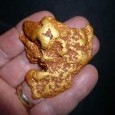
.thumb.jpg.f9deae04da1587f330f23efcb0e9c7fc.jpg)


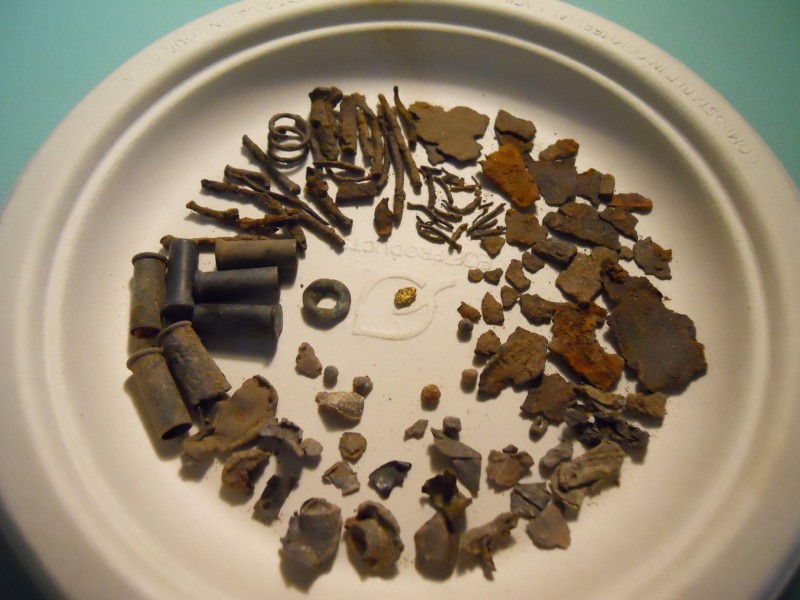
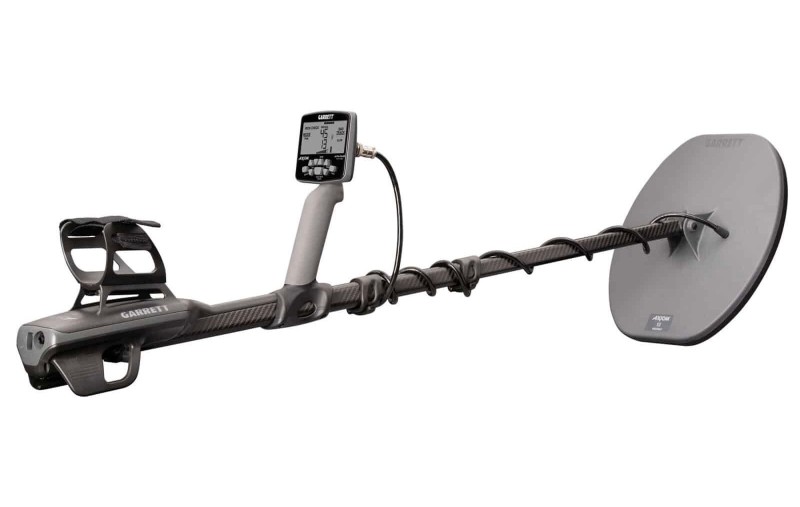
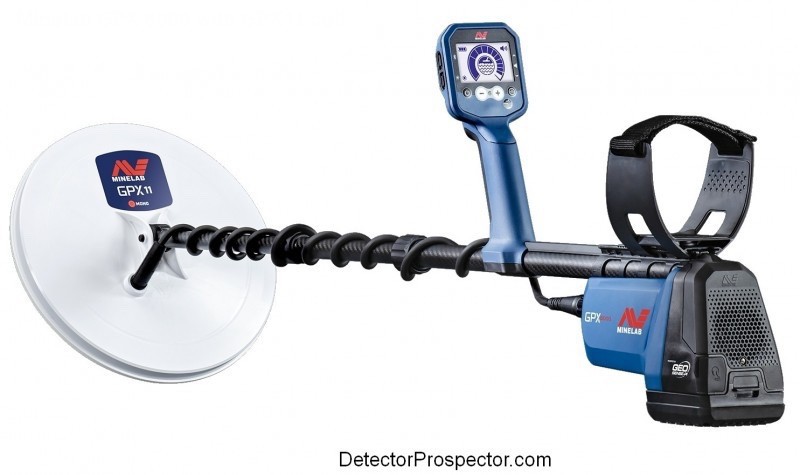
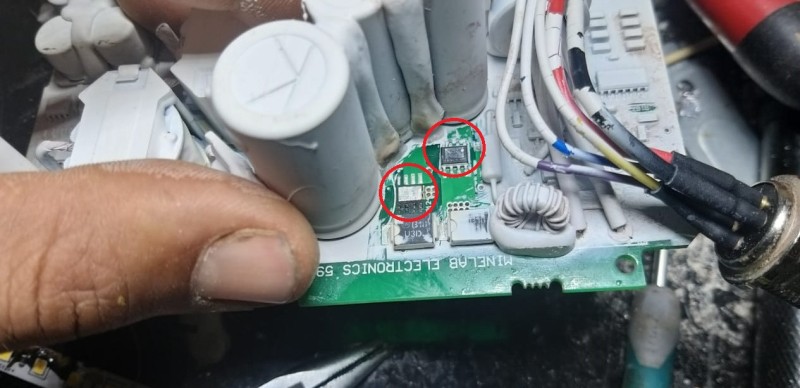

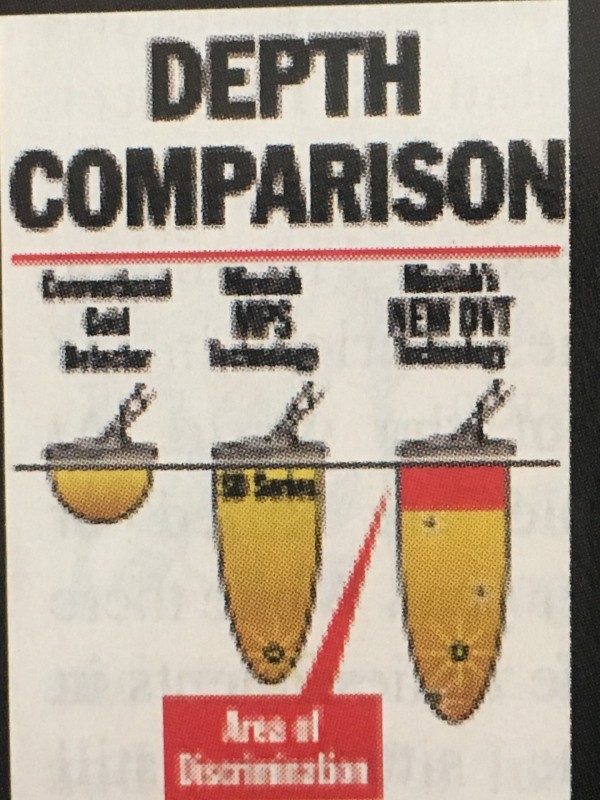
.thumb.png.338b88ce5527d220f62bb5d197431db2.png)
